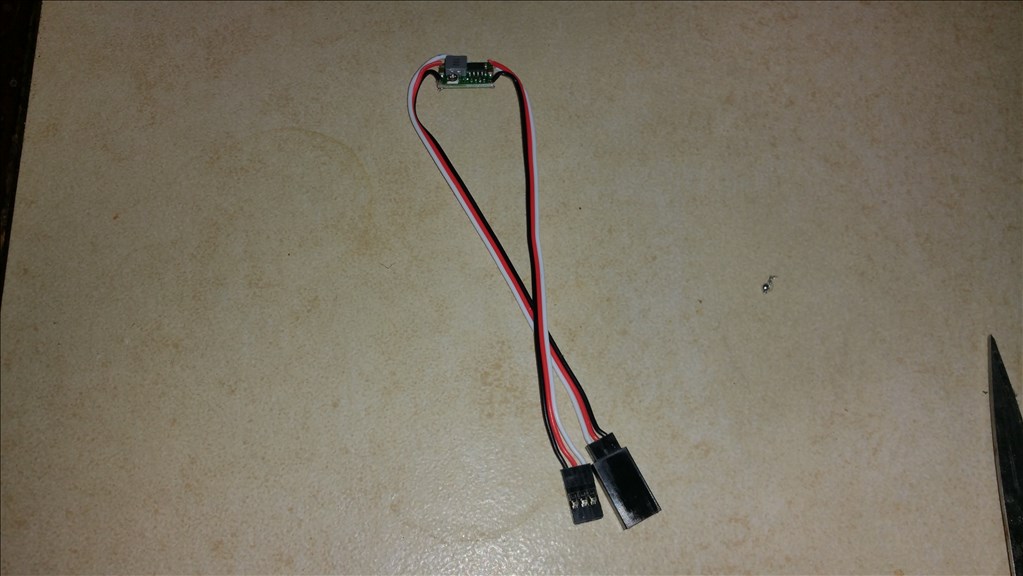jstarne1
USA
Asked
— Edited
Hello everyone , I sourced switching regulators that are also adjustable from 4.75 volts to 14 volts , I added standard servo ext plugs so they plug directly into your V4 EZB. I will be making these for myself and the community so I hope everyone likes them. Please be aware I can only send these where you will not have rediculous duties or shipping fees as I will just mail them in a standard envelope.
I am looking for 10 testers , try them out , see how you like them and report back. First one is free!
I can also make them with jumper style pigtails for sensors , but I will get in the pigtails later.



I am considering a red epoxy coating to protect them from electrical contact and shorts with other exposed pins. I initially was thinking of shrink wrap but the Potentiometer must be exposed to adjust the voltage.
Josh that is actually a really good idea and a great solution. How much current can those regulators supply? Just one minor question.... Those servo extension wires you have in the picture, what gauge are they? I have some of those and I think mine are something like 24 gauge.... I use them for sensors only because they are too thin to use with my inMoov's HS-805bb servos.... I think the hitec servos use 20g twisted pair.... I would try and use at least as heavy gauge wire with them as comes with the servo themselves...
Josh, I am interested also. USPS delivery should not be a problem. please send me an EMail @ [email protected] and I'll give you my address.
Hi Josh, I'm interested in them and would like to be tester. [email protected]
Josh,
I could use 3 of them for my current project. I need 12V for a 3LED strip, 7.4V for EZ-B and 5V for an audio amplifier. My source voltage is 13.8 V.
I would be willing to pay for them.
I am in Southern California. [email protected]
Clear oversized heat shrink would solve the access problem. Just slide the regulator out of the way. Either that or make a hole where the screwdriver needs to enter to adjust (presuming it's a screw adjust) Increase the extension cable's gauge too (what's the max current they can supply? Work out the cable size based on the worst case scenario and cover yourself). Presumably the signal cable is not split and one continuous piece from one connector to the other?
Just a few thoughts, do with them what you will
jstarne1
i use this one for coating a print.it dry's very quick.
coating
Switching regulators are the very best way to go. They are usually small, run cool and power efficient. Very little power loss. However make sure you know how many amps (current ) your going to draw through them and buy one that will handle the load. Small sensors will usually draw well less than an amp. Motors and servos may draw many, many amps.
Josh, has a fantastic idea and offering here. Josh, could you tell us what this is rated for?